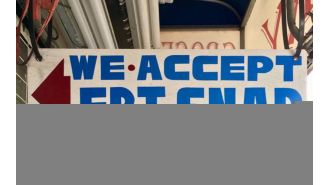MBA Mondays: Guest Post From Susan Loh
When I introduced this series on People, I stated that it was going to have a bunch of guest posts because there are many people who know a lot more about the people side of business than I do. One of them is Susan Loh who is Head of Talent at Foursquare.
I asked Susan to write a guest post explaining how they manage both recruiting and HR at Foursquare. And she has done just that.
————————————–
Foursquare’s approach to Recruiting & HR
In Fred’s previous post, he described the importance of having a tight relationship between culture and hiring. I agree 100%, which is why I’ve always struggled with HR and recruiting being separate teams. At my previous companies, Google and Yelp, there was always a swift hand-off from recruiting to HR on the new hire’s first day. It made life easy for each party, but was it the best for the employees? For this post, I’ll describe the challenges I experienced with having split teams and how I’m trying something different at foursquare.
Recruiting vs HR
As a recruiter, the most important part of the job is to close offers. This often means setting high expectations for how wonderful the new opportunity will be. Whatever it takes – always be closing. But what if we over-promised? At previous companies, it was tough to keep tabs on my new hires because I was so focused on the next set of recruits. Sometimes I didn’t know what team they landed on. Often, I didn’t know if they were happy and engaged. There was no feedback loop for me to know that what I was selling to my candidates was actually true. This is risky and has potential to cause serious turnover.
On the flip side, as an HR manager, your ultimate goal is to retain great talent. You build compensation structures, learning & development programs, performance management systems, and rewards programs to help you achieve this goal. But to succeed, you have to gather feedback from employees and know what they need. You have to be accessible and provide a safe haven for employees to come vent to you. You have to have a pulse on the entire organization.
But in reality, think about how often the average employee interacts with HR. Based on my experience, I only saw HR on my first day and on my last day. If I had a question, I emailed a ticketing system and they got back to me a couple days later. There is no feedback channel or safe haven. For so many reasons that could warrant a separate post, traditional HR departments have a tendency to be pushed to the side, disconnected from the organization, and as a result, ineffective at having a positive impact. And this is a huge bummer because every HR manager I’ve met wants to do so much more.
A new approach
When the time came to figure out how to scale HR & Recruiting at foursquare, I felt that I could solve the above issues by merging the two organizations into one unified Talent Team. I view the Talent Team as a full service organization that is with you from the day you apply to the company to the day you leave the company. We are responsible for recruiting, onboarding, training, developing, and retaining great people. Our performance is measured by the performance of the people we hire, not by the sheer number of people we hire.
In practice, this means recruiters need to be so much more than just recruiters. My team meets monthly to find ways to tweak and refine the onboarding experience for new hires. We schedule regular check-ins with each person we hired to see how they are doing and figure out how we can better support their career growth. We come up with innovative programs to develop and motivate employees. We escalate feedback we’re hearing to the executive and management teams. Above all, we provide one trusted point of contact for all candidates and employees to turn to when they need something.
The Talent Team in action
Here are just a couple of examples of where I’ve noticed the advantage of a Talent team over Recruiting/HR.
1) Fulfilling promises – When recruiters have to play the role of HR, they are held accountable for fulfilling the promises they made during the closing process. For example, many of our candidates have strong entrepreneurial spirits and talk of founding their own company. To close them, I sell them on how much they will benefit from being part of the foursquare story, helping us get from small startup to big successful company. It’s these ambitious, entrepreneurial employees that become the stars of your company, so the more you make good on this promise, the longer you’ll retain them. So how do you do it? The company has to be transparent on everything – company decisions, user growth metrics, competitive threats, etc. It’s ultimately up to senior management to lead by example but the Talent Team serves as a gut check. If we notice the culture changing, or morale dropping, or frustrations building, we have a vested interest to inform management immediately and help them troubleshoot the situation.
2) Compensation reviews – In the traditional model, recruiting determines the starting compensation package, usually working within bands provided by HR. When review time comes, HR works with management to determine performance-based raises. Some companies have standard percentage-based raises for ‘meets expectations’ and ‘exceeds expectations’ but there’s a key piece of information missing. How hard did the employee negotiate their initial offer? Some candidates accept on the spot while others push their recruiter so close to the edge that the recruiter almost gives up and walks away from the negotiation table. If HR works purely off a compensation analysis spreadsheet and assigns standard raises, the candidates that accepted on the spot will always be paid less than their tough-negotiating peers. This is unfair. Recruiters have to be part of these conversations and with the Talent Team model, they are.
3) The little details – During the traditional hand-off between recruiting and HR, you are at risk for dropping the ball on something. There are just too many moving pieces in the onboarding process – start date, offer paperwork, relocation, immigration, IT preferences, team allocation, and more. With the Talent Team model, you have fewer cooks in the kitchen. The recruiter should know everything the new hire needs so it’s more efficient and reliable for the recruiter to be responsible for the onboarding process. First impressions do matter – do everything possible to ensure your new hire’s first week goes smoothly.
Upcoming challenge
The Talent Team model is still new and we haven’t figured everything out yet. So far, what I love most about this model is we have such a strong pulse on the organization. If employees are unhappy about something, we are usually one of the first to know, and employees look to us for help. And the best part? We can help. Information and feedback from all directions flow through the Talent Team, and we are uniquely positioned to take everything we are hearing and turn it into constructive action.
Our biggest challenge is staying small and lean, while the larger organization continues to grow at a quick pace. The only way we can keep up is if we do a good job of building the foundation. Off the top of my head, I think that means a culture based on open feedback, strong hiring values that sync with company values, and a well-trained management team that we can leverage for help. But I’m sure I’m missing pieces of the puzzle and I look forward to continuing the conversation with you. Thanks for reading!






